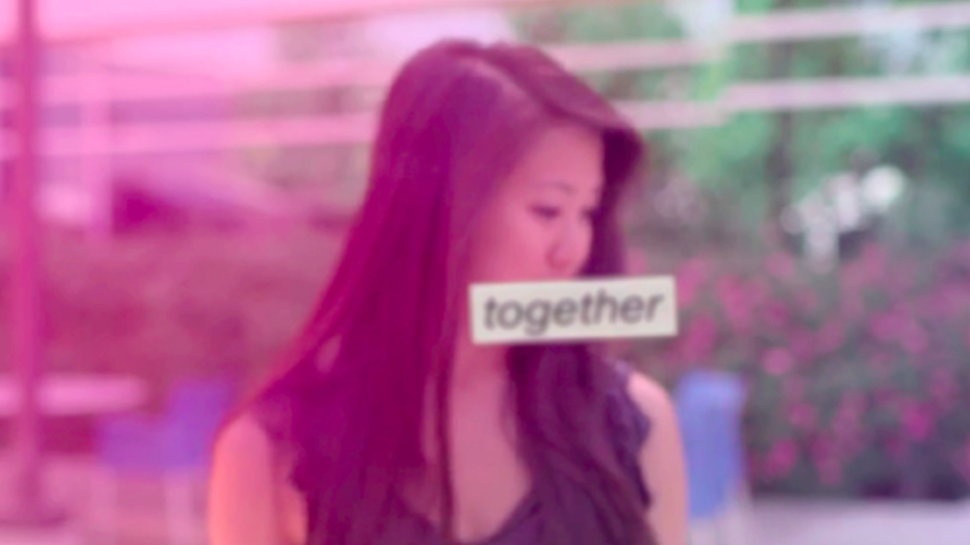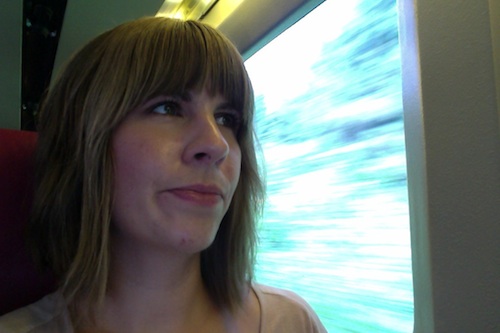Blog Post #5: Ending an Encounter: Some notes on the end of a residency
It’s hard to believe it was a year ago that I officially began “residing” in the R&D space, at the beginning of what was designed as a one-year curatorial residency on the various methods that artists and curators employ when asking viewers to look at difficult images. “Curatorial residency” was never an entirely accurate way of describing the series of panel discussions, blog conversations, looking groups and many many meetings that structured “Coming to Encounter.” While curatorial residencies usually infer a constant physical presence, where the curator comes into the gallery, or at least the gallery offices, to work regularly and produces a project or series of projects to present to the public as the culmination of their research, “Coming to Encounter” was more a series of always in-progress attempts at finding different ways to look at and talk about images together, in the context of the gallery. Trying to take the spirit of Gallery TPW’s Research and Development programming to heart, and its goal of “doing research in and with the public” seriously, I spent much of the past year thinking about what it means to try to engage with images that put us in an uneasy position as viewers, and then trying out different methodologies for looking at, and talking about, these encounters with photographs. Each event felt like an experiment that often tested my tolerance for awkward silences, for not being sure how to proceed, and for how I measure the success of a curatorial project.
I quickly discovered that my methods of working, both as an academic and as a curator, tend towards long periods of researching, conceptualizing and designing a project, followed by a rapid and condensed period of realizing it in public. Working in the R&D space, in what felt like a suspended state of research-done-through-presentation, challenged those working methods, forcing me to present questions and ideas to the public that felt like they weren’t finished yet. Although there was a traditional gallery exhibition that served as one of the concluding gestures of the residency, it was discussion and conversation that became the main output (to use the jargon of academic grant reporting) of the “Coming to Encounter” residency: a kind of halting, protracted talking with a rotating group of participants that saw us make false starts, disagree with one another, make tentative proposals and circle back on ourselves as we tried to make sense of what it is we want from photographs, and what we do when those desires become frustrated.
Now that my residing has ended—and I find myself literally residing in England, where I’m finishing the last of my dissertation research—echoes of the questions and problems that “Coming to Encounter” raised continue to appear in my other work as an academic and critic. Spurred on by Kim Simon’s excellent questions, and the more recent experience of trying to explain looking group to people who were not able to ever attend a meeting in person, I’m still wrestling with how to facilitate No Looking After the Internet in a way that will encourage participants to push past our initial observations as viewers and to try to articulate the deeper, psychic effects that images can have on us (something I’m hoping to field test with a whole new group of participants at London’s Arcadia_Missa gallery later this month). And, having just designed and proposed a new postdoctoral research project that tries to bridge my academic research on the colonial archive with my work as a curator, it even has me thinking about the function of the gallery as a space for research and development. What does it mean when the gallery, usually thought as a space of public presentation, becomes the site of research that propels further research? How does this change the gallery’s public function (or does it)? How is curatorial authorship challenged, stressed and re-envisioned when you approach each program as a work-in-progress, open to the interventions of your collaborators and participants?
These questions can’t really be answered, and I’m sure will be much more articulately expressed by the programming that continues at TPW’s R&D site and in their new permanent home next year. Given that one of my main interests at the start of the residency was in how theories of pedagogy might help us to analyze our responses to difficult images (a theme that became more implicit than explicit as the programming progressed), I’m especially enjoying watching Vesna Krstich’s “Back to School” curatorial residency from afar, which continues to think on the role of the gallery by explicitly bringing models for learning into the R&D space, along with a whole new body of students. If learning from difficult knowledge is always latent, feeling as though it comes too early or too late to be useful in the moment it seems most needed,1 then perhaps the most satisfying curatorial research is the kind that feels like it does not end, but continues to provoke more questions, more experiments, and more talking in circles.
1. Deborah P. Britzman, “Love’s impressions: a psychoanalytic contribution,” British Journal of Sociology of Education, 30. 6 (November 2009): 773–783, 777.↩










